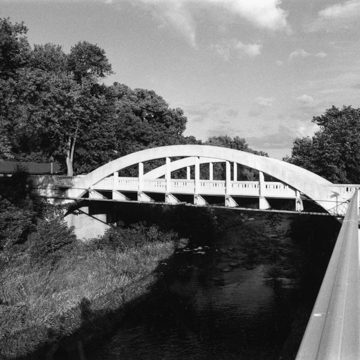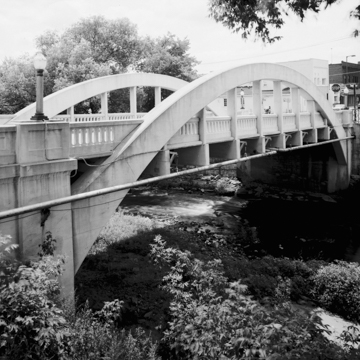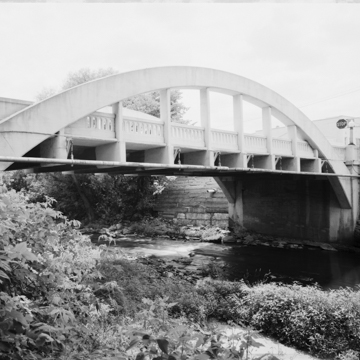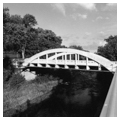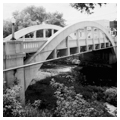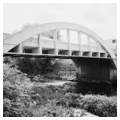Chippewa Falls boasts Wisconsin’s only Marsh Rainbow Arch Bridge, a patented reinforced-concrete span. Marsh, an engineer from North Lake, Wisconsin, developed the prototype in 1912, basing his invention on the metal bowstring arch, which his onetime employers, the King Bridge Company of Cleveland, had patented. Since bridges must bend with heavy loads, concrete, which is rigid, must be reinforced with iron or steel bars for elasticity. Reinforced-concrete spans existed as early as the 1880s, but they used large quantities of iron and imitated traditional stone bridges in their design. Soon after 1900, European engineers experimented with slender ribs and flattened parabolic curves. These bridges were built much as a metal truss bridge, with the steel lattice frame assembled on the ground then placed atop concrete piers. Finally, concrete was poured around the frame.
After the previous bridge over Duncan Creek washed out in the spring of 1916, the city selected Marsh’s design for the new bridge and hired the Iowa Bridge Company to build it. The elegant rainbow arch has twin arches springing from a line thirteen feet below the road deck, rising to their apexes twenty-six feet above the spring line. The arches taper in thickness from abutment to apex, adding a visual grace. The bridge deck hangs from reinforced-concrete members that descend from the arches. Oval-pierced concrete railings enclose the sides of the ninety-foot span. The original lampposts, with their acorn globes, still greet travelers at each end.


